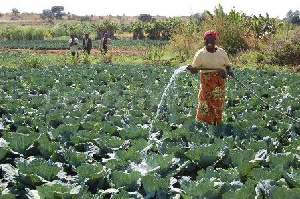Africa has the lowest agricultural research personnel capacity in the world, with only 70 researchers per million inhabitants, compared to 2,640 in the US and 4,380 in Japan.
This came to light when the Africa Agriculture Status Report, an inaugural report on the state of the continent’s agriculture, was launched in Maputo, Mozambique, on September 4 by the Alliance for a Green Revolution in Africa (AGRA).
The report takes an in-depth look at the staple crop value chain – from the classroom to field to market – in the 16 countries that AGRA operates in on the continent.
It brings together data and analysis from over 15 national and international organisations, including ministries of agriculture, the World Bank, the Food and Agriculture Organisation (FAO) and the International Fund for Agriculture Development.
It focuses on staple crops such as cereals and root crops, around 75 percent of which is produced in Africa rather than imported. The report reveals that while a number of countries are investing in research and development (R&D) and developing their agricultural sectors, others lag behind, to the detriment of food security.
It also notes that declining soil fertility threatens crop yields and agriculture development in a number of countries. For instance, while the average price of fertilizer delivered to farms in the USA is US$226 per ton, it is US$414 per ton in Zambia.
It further concludes that outdated national and regional laws and regulations are restricting the development of Africa’s seed markets: the average length of the seed release process is around three years in most sub-Saharan African countries.
The report says low-cost and subsidised food imports are weakening African agricultural markets, along with poor access to credit, trade restrictions and high cost of transportation. Although agriculture represents as much as 40 percent of GDP in some African countries, only 0.25 percent of bank lending goes to smallholder farmers.
In addition, women, who represent the majority of the continent’s smallholder farmers, are heavily disadvantaged under current land rights systems. This is reducing their ability to access credit, agricultural technologies and services. Evidence shows that women in Africa are five times less likely than men to own land.
The report is divided into two sections: the first focuses on agricultural growth, competitiveness, factors of production, land, soil fertility, seed production, agriculture financing, output markets, capacity building, agriculture policy, farmer organisations, women in agriculture, and extension services.
The chapters outline the current status and the interventions offered by various players in the field of agriculture.
The second section is a collaboration of both macro and micro data from selected countries. The micro data was provided by Ministries of Agriculture and Bureaus of Statistics in the respective countries. The macro data was gathered from institutions that track key indicators on a regular basis such as the World Bank, FAO and the Organisation for Economic Cooperation and Development.
The expectation going forward is to track the micro data on a regular basis and avail these data to actual or potential consumers of the information.
Other key findings of the report include the fact that although 70 percent of prime land is uncultivated, land holdings in Africa continue to shrink, with most countries having an average size of holding below three hectares.
Additionally, most countries in Africa have a range of customary, statutory and hybrid institutions with co-existing de jure or de facto authority over land rights. Many countries are also struggling to integrate formal and customary land tenure systems.
Land is a critical resource for agriculture. The issue of availability of arable land at national, regional and smallholder farmer level is important. There are challenges of high cost of fertilizer and inability to obtain sufficient quantities of organic matter to improve soil health. The report argues that linking value chain players to affordable financing can help ameliorate this problem.
The President of AGRA, Mrs. Jane Karuku, noted that given the role agriculture plays in African economies, it is critical to have such a resource to inform the designing of policies and strategies.
The chapters in the report were guided by the value chain concept. The concept runs from production, through post-harvest handling, to processing and marketing of the commodities, to consumption. It takes into consideration the input-output markets, be they domestic, regional or global.
The AU Commissioner for Rural Economy and Agriculture, Mrs. Peace Rhoda Tumusliimi, the Minister of Trade and Industry for Mozambique, Mr. Armando Inroga, and the Vice Chair of AGRA, Mr. Strive Masiyiwa, together launched the report in Maputo where over 150 leading figures, experts, including African heads of state, farmers and business leaders assembled for the start of the Alliance for a Green Revolution Forum (AGRF) from September 4-6.
The overall theme for AGRF is “Scaling Up and Financing Inclusive Agribusiness through Transformative Public-Private Partnerships”.
Business News of Tuesday, 10 September 2013
Source: B&FT
Africa trailing in agric research personnel
Entertainment












